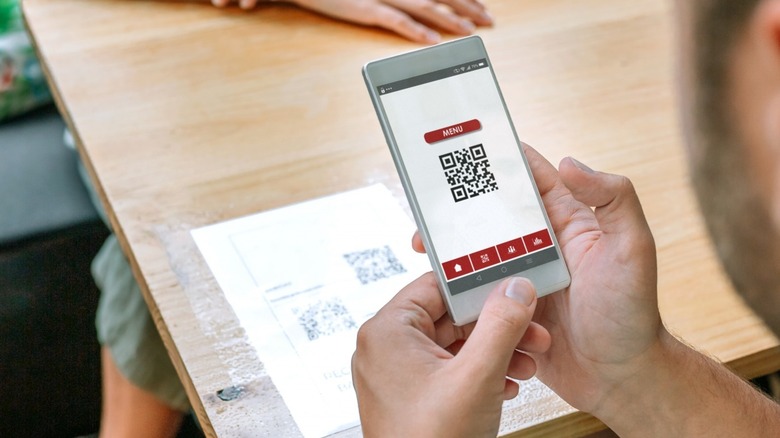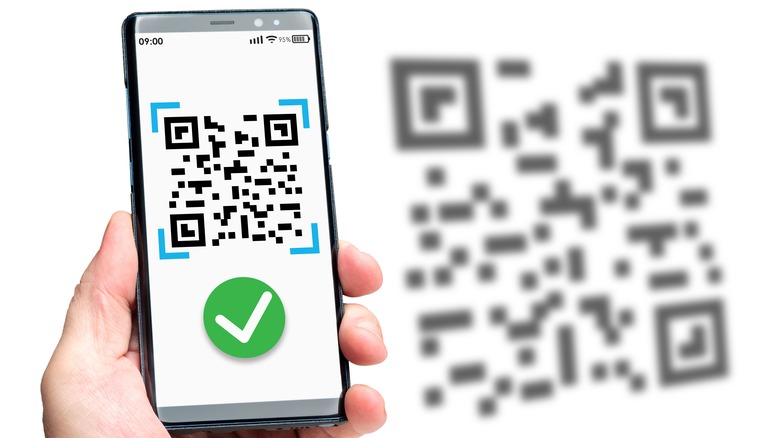How To Make Sure A Restaurant's QR Code Isn't A Scam
When we think of online scams, we mostly think of those fake phishing ads or the annoying pop-ups saying you've won a cash prize. Those types of schemes are pretty easy to avoid. But what if there were another that way scammers could pull a fast one on you, and you wouldn't even know it? What if it were something hidden in plain sight at your local restaurant?
QR codes in restaurants have become a common sight these past few years. Simply scan them with your phone, and you can bring up the restaurant's menu. Eateries can even use these codes to offer special deals and promotions or to get customer feedback, per Total Food Service, creating a digital link between client and business. But some QR codes have been hijacked, meaning they've been replaced or covered up with another code designed to bring you to a malicious site. CNET warns that these types of scams are becoming more common as businesses shift to digital transactions during the pandemic. Fortunately, like all scams, there are ways to identify a fake QR code and prevent scammers from getting into your phone in the first place.
Look for these tell-tale signs
While verifying a real QR code from a fake one isn't as easy as picking out a suspicious email, the FBI has several tips on how to make sure that what you scanned is legitimate. Before you scan, it's recommended to take a good look at the QR code sticker itself. Does it look compromised? Maybe worn around a corner as if someone tried to lift it off? While it may have been from a bored customer picking at the corners, it could be a sign that someone replaced the original sticker with another code.
Next, when you do scan the code, double-check to see if the URL of the website you've been brought to is authentic. If it has any typos, such as the name of the business being misspelled, you're probably on the wrong website. Finally, it's best not to conduct any transactions that require personal information on a website from a QR code. When possible, use a trusted mobile payment app or simply pay with cash. How on-alert should you be about these schemes? According to the AARP, these types of scams have been around since the first QR code came out in the 1990s. Any sort of new technology can be used by scammers, given enough time. This definitely doesn't mean you should stop eating out — just consider being more cautious the next time you scan something with your phone.

